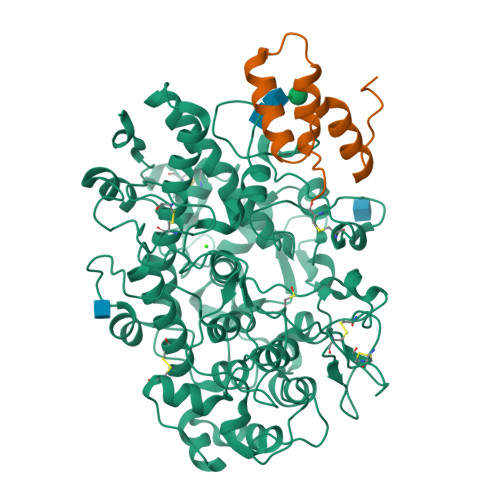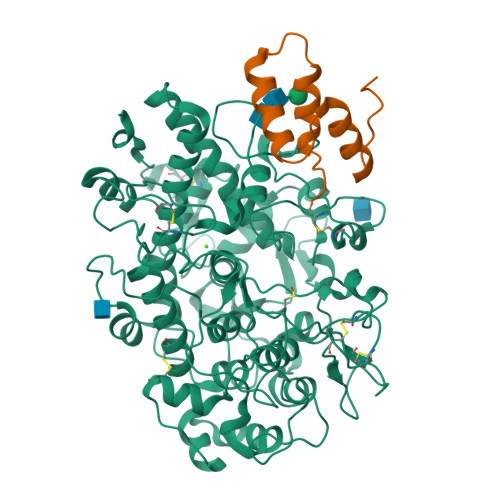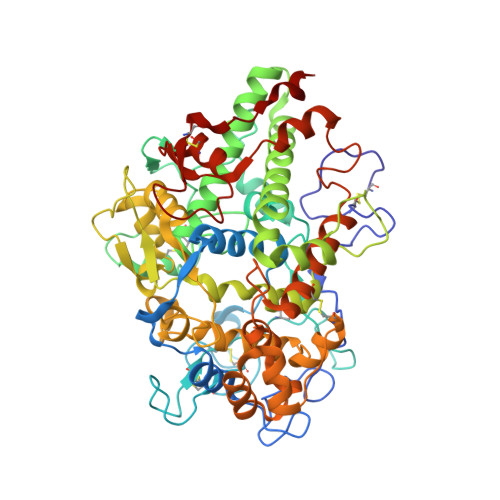A structurally dynamic N-terminal region drives function of the staphylococcal peroxidase inhibitor (SPIN).
de Jong, N.W.M., Ploscariu, N.T., Ramyar, K.X., Garcia, B.L., Herrera, A.I., Prakash, O., Katz, B.B., Leidal, K.G., Nauseef, W.M., van Kessel, K.P.M., van Strijp, J.A.G., Geisbrecht, B.V.(2018) J Biological Chem 293: 2260-2271
- PubMed: 29306874
- DOI: https://doi.org/10.1074/jbc.RA117.000134
- Primary Citation of Related Structures:
6AZP - PubMed Abstract:
The heme-containing enzyme myeloperoxidase (MPO) is critical for optimal antimicrobial activity of human neutrophils. We recently discovered that the bacterium Staphylococcus aureus expresses a novel immune evasion protein, called SPIN, that binds tightly to MPO, inhibits MPO activity, and contributes to bacterial survival following phagocytosis. A co-crystal structure of SPIN bound to MPO suggested that SPIN blocks substrate access to the catalytic heme by inserting an N-terminal β-hairpin into the MPO active-site channel. Here, we describe a series of experiments that more completely define the structure/function relationships of SPIN. Whereas the SPIN N terminus adopts a β-hairpin confirmation upon binding to MPO, the solution NMR studies presented here are consistent with this region of SPIN being dynamically structured in the unbound state. Curiously, whereas the N-terminal β-hairpin of SPIN accounts for ∼55% of the buried surface area in the SPIN-MPO complex, its deletion did not significantly change the affinity of SPIN for MPO but did eliminate the ability of SPIN to inhibit MPO. The flexible nature of the SPIN N terminus rendered it susceptible to proteolytic degradation by a series of chymotrypsin-like proteases found within neutrophil granules, thereby abrogating SPIN activity. Degradation of SPIN was prevented by the S. aureus immune evasion protein Eap, which acts as a selective inhibitor of neutrophil serine proteases. Together, these studies provide insight into MPO inhibition by SPIN and suggest possible functional synergy between two distinct classes of S. aureus immune evasion proteins.
Organizational Affiliation:
From Medical Microbiology, University Medical Center Utrecht, 3584 CX Utrecht, The Netherlands.
























